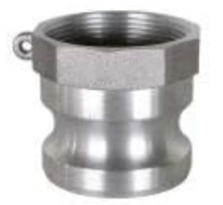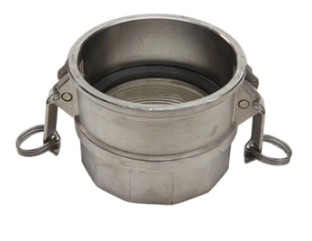Camlock male fittings play a pivotal role in fluid systems, providing a secure and efficient way to connect hoses and pipes. In this comprehensive guide, we’ll navigate through the intricacies of camlock male fittings, covering types, applications, and installation tips.
Whether you’re a seasoned professional or a DIY enthusiast, this article aims to empower you with the knowledge needed to optimize your fluid systems with camlock male fittings.
What are the Camlock Male Fittings?
Camlock male fittings are a type of quick coupling known for their simplicity and reliability. They feature a male adapter with cam arms that, when engaged with a female coupling, create a tight and leak-resistant connection.
Applications Across Industries
Discover the versatility of camlock male fittings in diverse industries. From agriculture to manufacturing, these fittings find applications in fluid transfer systems, providing a quick and secure connection that enhances operational efficiency.
Advantages of Camlock Male Fittings
Efficiency in Fluid Transfer
Camlock male fittings excel in providing rapid and secure connections, minimizing downtime in fluid transfer operations. Their simple yet effective design streamlines processes and ensures a reliable flow.
Versatility in Material Selection
The availability of camlock male fittings in different materials allows users to choose fittings that align with their specific requirements. Whether it’s the durability of stainless steel or the lightweight nature of aluminum, there’s a camlock male fitting for every need.
Difference Between Male and Female Camlock?
The main difference between male and female camlocks is their role in forming a connection:
Male camlock: This is the “plug” part of the connection. It has a spigot with grooves on its outer edge and a lever or cam that locks it into place. Male camlocks are typically attached to the end of a hose or pipe.
Female camlock: This is the “socket” part of the connection. It has a receptacle with corresponding grooves on its inner edge and a lever or cam that clamps down on the male camlock’s spigot. Female camlocks are typically attached to tanks, pumps, or other equipment.
Here’s a table summarizing the key differences:
|
Feature |
Male Camlock |
Female Camlock |
|
Role |
Plug |
Socket |
|
Appearance |
Spigot with grooves |
Receptacle with grooves |
|
Locking mechanism |
Lever or cam on spigot |
Lever or cam on receptacle |
|
Attached to |
Hose, pipe |
Tank, pump, equipment |
FAQs: Answering Your Camlock Male Fittings Queries
How do camlock male fittings differ from female fittings?
Camlock male fittings feature protruding arms, while female fittings have corresponding indentations. When connected, these cam arms create a secure and leak-resistant joint.
Can I use camlock male fittings for high-pressure applications?
Yes, camlock male fittings work for high-pressure. But, the material and design must meet the system’s requirements. Always check the manufacturer’s specifications for pressure ratings.
Are camlock male fittings compatible with all types of hoses?
Camlock male fittings are compatible with a wide range of hoses, including rubber, PVC, and composite hoses. Ensure proper sizing and compatibility for optimal performance.
How tight should I make the connection using camlock male fittings?
Tighten Camlock male fittings securely to stop leaks. But, avoid over-tightening. It can damage the arms. Follow manufacturer recommendations for torque values.
Can camlock male fittings be reused?
Camlock male fittings are designed for multiple uses, but it’s crucial to inspect them for wear or damage before reuse. Damaged fittings should be replaced to maintain a reliable connection.
Are there specific safety considerations when using camlock male fittings?
Ensure proper handling to avoid injuries. Be cautious of moving parts and pinch points. This is when connecting or disconnecting camlock male fittings. Observe the safety instructions that the manufacturer has provided.
Conclusion
Camlock male fittings are vital in fluid systems. They offer efficiency, versatility, and reliability. You might work in agriculture, manufacturing, or other industries. Knowing the types, advantages, and installation tips lets you make informed choices.
Embrace the efficiency of camlock male fittings and unlock the full potential of your fluid transfer systems.
Post time: Feb-21-2024



